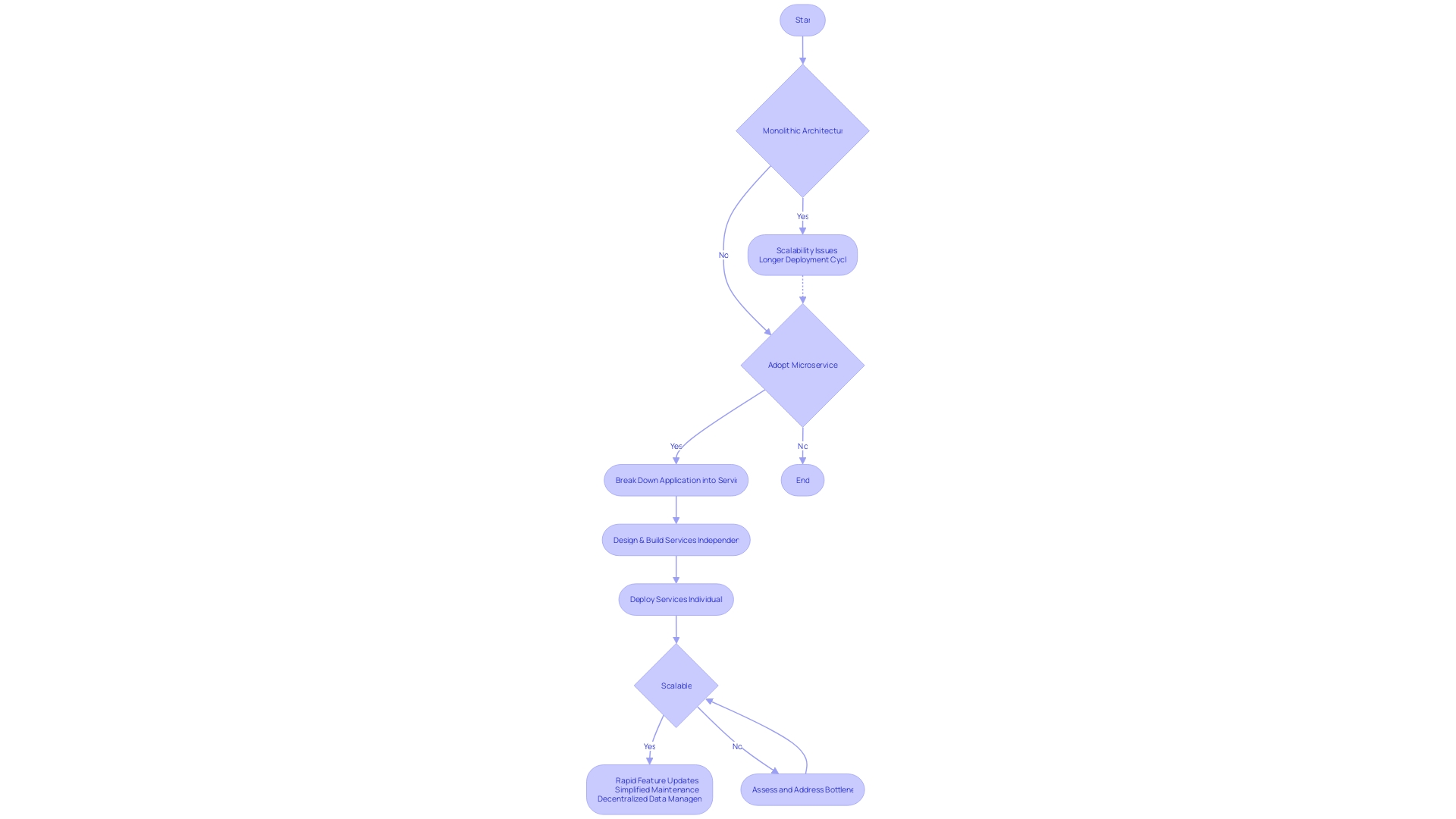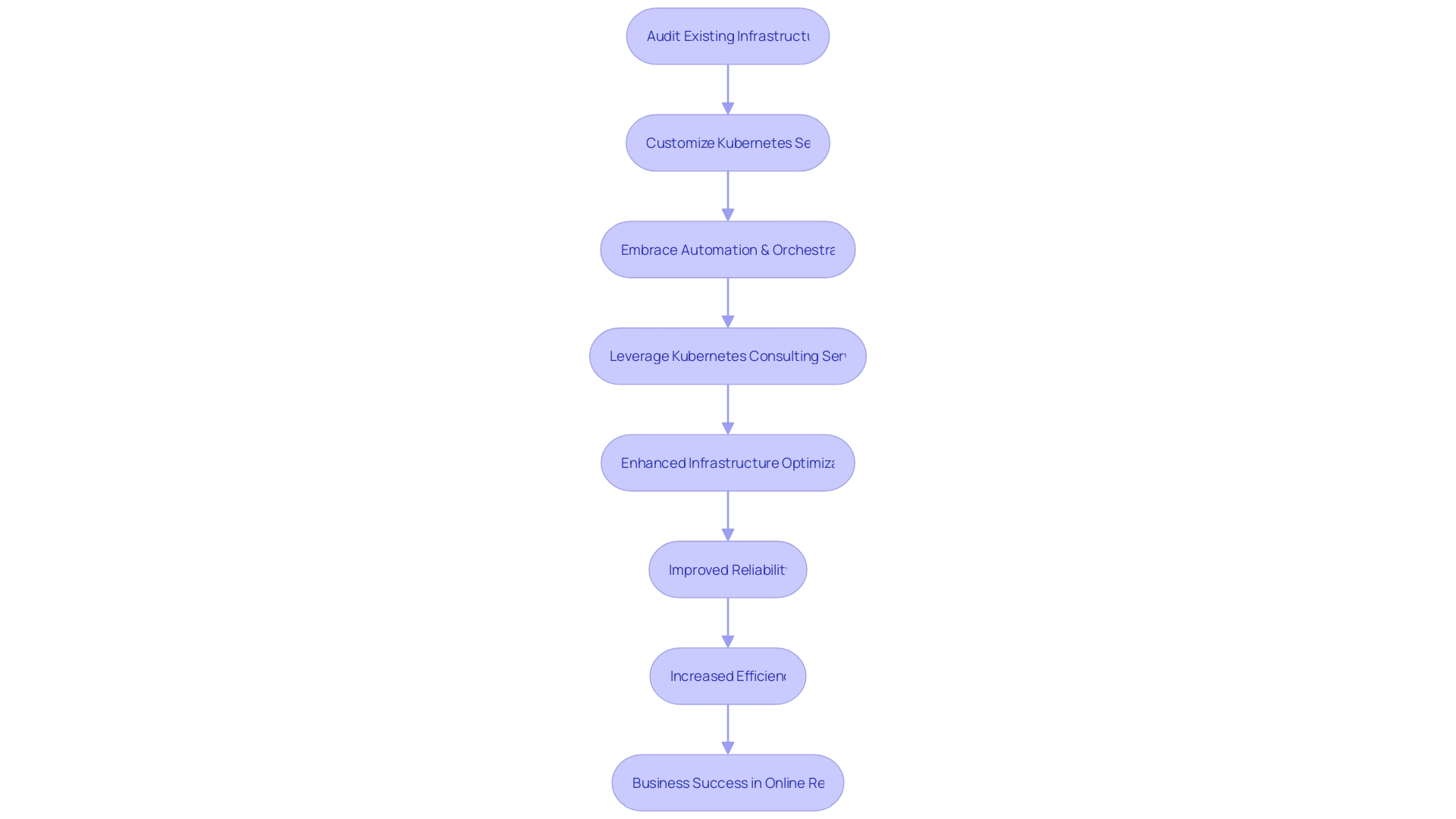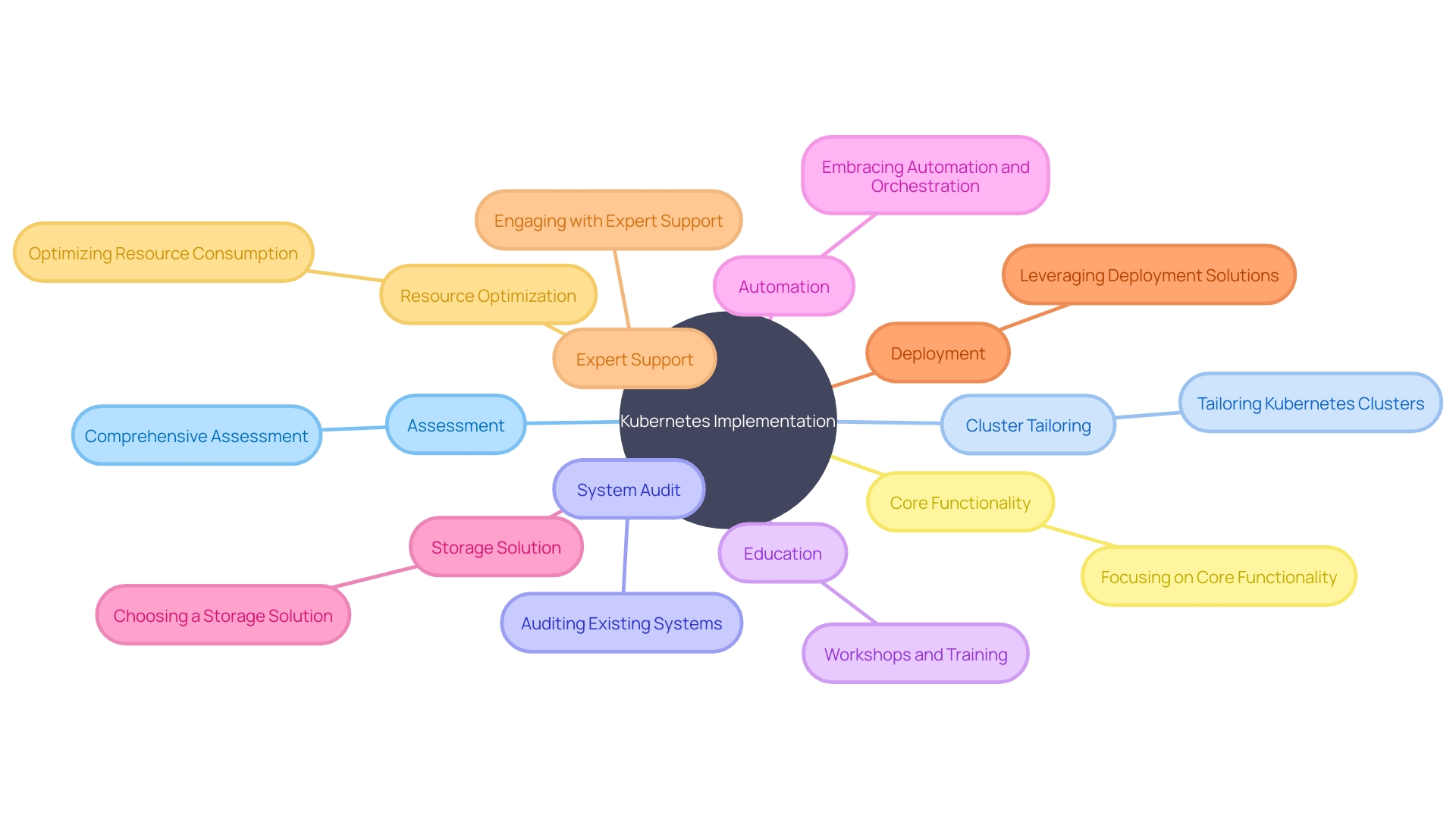Introduction
While monolithic architectures have long been the standard for software development, they are increasingly being scrutinized for their limitations, particularly in the context of dynamic e-commerce environments. Monoliths, typically involving a unified codebase, can present significant barriers to scalability and flexibility. For instance, implementing updates or modifications in a monolithic system can be cumbersome and risky, leading to potential system downtimes—a critical issue for e-commerce platforms where any interruption can result in lost sales and customer dissatisfaction.
Moreover, the traditional monolithic approach can stifle innovation due to its inherent complexity, making it challenging for developers to quickly adapt to changing market demands or introduce new features. This rigidity contrasts with composable solutions, which offer the advantage of modularity, allowing for the seamless integration of various components to enhance the user experience and backend efficiency. In this article, we will explore the benefits of microservices architecture as a strategic move for organizations aiming to enhance their software development processes.
We will delve into the working principles of microservices, demonstrated through practical coding examples, and learn from the experiences of those who have navigated the transition. Additionally, we will discuss the significance of Kubernetes consulting services in achieving e-commerce success and overcoming common challenges in Kubernetes migration. By leveraging expert advice and recommendations, businesses can position themselves for sustained growth, innovation, and competitiveness in the fast-paced digital marketplace.
The Challenges of Monolithic Architectures
While monolithic architectures have long been the standard for software development, they are increasingly being scrutinized for their limitations, particularly in the context of dynamic e-commerce environments. Monoliths, typically involving a unified codebase, can present significant barriers to scalability and flexibility.
For instance, implementing updates or modifications in a monolithic system can be cumbersome and risky, leading to potential system downtimes—a critical issue for e-commerce platforms where any interruption can result in lost sales and customer dissatisfaction. Moreover, the traditional monolithic approach can stifle innovation due to its inherent complexity, making it challenging for developers to quickly adapt to changing market demands or introduce new features.
This rigidity contrasts with composable solutions, which offer the advantage of modularity, allowing for the seamless integration of various components to enhance the user experience and backend efficiency. The growth of e-commerce has spotlighted the importance of agile and resilient systems.
For example, Dunelm Group plc, a leading homewares retailer in the UK, found that as their digital platform grew, representing 35% of their revenue, their monolithic backend became a bottleneck to further expansion. Similarly, when Uber experienced significant scaling issues with their monolithic invoice generation service, they realized the necessity of migrating to a more distributed system to handle the increased load and maintain service quality. These real-world cases underscore the industry's shift towards architectures that can support rapid growth and continuous improvement. As the e-commerce industry burgeons, with a 14% increase in the number of UK retail companies over five years, the move away from monolithic systems to more adaptable and resilient architectures becomes not just a technical preference but a business imperative to sustain growth and remain competitive.
Benefits of Microservices Architecture
The paradigm shift from monolithic to microservices architecture is a strategic move for organizations aiming to enhance their software development processes. Microservices architecture, characterized by its collection of small, independent services, enables businesses to scale specific services as needed without the constraints of a monolithic design. This modular approach not only allows for targeted scaling but also facilitates the integration of new functionalities with greater ease.
Uber exemplifies the successful adoption of microservices, with a deployment of over 100,000 updates weekly across 4,500 stateless services managed by autonomous teams around the globe. This decentralized structure underscores the architecture's ability to support a diverse range of services, streamline deployments, and optimize operations. Similarly, Azure's platform has become a beacon for businesses transitioning to microservices, offering an array of services, tools, and technical support, thus aligning software development with strategic business objectives.
Microservices empower development teams to act with more autonomy, enabling them to develop, test, and deploy changes independently. This results in significantly reduced development and deployment cycles, allowing for rapid feature updates and bug fixes. Additionally, the architecture's inherent modularity simplifies maintenance and debugging efforts, as issues can be isolated and addressed within individual services, minimizing system-wide disruptions.
"We are in a generation where technology is evolving every day," reflects an industry expert, reinforcing the need for a software architecture that can keep pace with technological advancements. Microservices architecture is at the forefront of this evolution, offering the agility and scalability necessary to meet the dynamic demands of modern software development. As we delve deeper into the landscape of microservices, we will explore the architecture's working principles, demonstrated through practical coding examples, and learn from the experiences of those who have navigated the transition, providing valuable insights for those embarking on this transformative journey.

Kubernetes Consulting Services: A Solution for E-commerce Success
Harnessing Kubernetes' full potential can revolutionize an e-commerce business's infrastructure, enabling automated deployment, scaling, and management of containerized applications. A well-executed Kubernetes strategy can enhance infrastructure optimization, reliability, and efficiency.
For instance, the Martian Kubernetes Kit showcases a configuration package tailored to clients' needs while providing essential infrastructure elements like monitoring and log aggregation. This approach underscores the importance of a customized Kubernetes setup that aligns with specific business objectives.
A comprehensive plan is crucial, encompassing audits, workshops, and training to manage Kubernetes clusters effectively. Organizations must embrace automation and orchestration, streamlining their deployment processes and ensuring their architecture directly supports their business goals.
Kubernetes consulting services can help businesses navigate the complexities of Kubernetes, from cluster management to understanding certificate expirations, which have been known to cause crashes if not properly monitored. Recent market shifts, as highlighted by GWS research showing fluctuations in daily mobile app users for major e-commerce platforms, illustrate the dynamic nature of the online retail space. E-commerce businesses can stay competitive by adopting Kubernetes, which allows for rapid scaling to meet changing market demands. By leveraging expert Kubernetes consulting services, companies can ensure a seamless transition to a modernized, efficient infrastructure, avoiding common pitfalls and positioning themselves for success in a highly competitive environment.

Case Study: How [Company] Achieved E-commerce Success with Kubernetes Consulting
A leading e-commerce enterprise embarked on a transformative journey to address the scalability challenges imposed by its burgeoning growth, particularly after shifting to a B2C model. The company's legacy system, built on a monolithic architecture, was struggling with increased site traffic and bandwidth limitations, leading to slower development cycles and frequent system failures.
Recognizing the need for a scalable, resilient, and agile systems architecture, the company sought the expertise of a Kubernetes consulting firm. The collaboration led to a strategic overhaul using Red Hat® OpenShift® on IBM Cloud container platform, which facilitated the transition to a microservices architecture.
This move not only enhanced the company's software development processes but also fortified system reliability and scalability. The successful migration was a testament to the robust capabilities of Kubernetes, which has seen its cloud-hosted clusters grow at an annual rate of 127%, reflecting a significant shift from on-premises hosting.
The modernized infrastructure, backed by Kubernetes' growing feature set—including enhanced security, efficient resource use, and better management of microservices—proved essential in managing the e-commerce platform's increasing demands. Kubernetes' open-source container orchestration platform, developed by Google Lab, offers automation in deploying, scaling, and managing containerized applications, ensuring that enterprises like this e-commerce leader can maintain a competitive edge in the fast-paced digital marketplace. The company's experience highlights the importance of agility and responsiveness in today's e-commerce landscape, where even minor service disruptions can erode customer trust. By leveraging Kubernetes' versatility and the consulting firm's proven record of designing scalable solutions, the company not only met its immediate challenges but also positioned itself for sustained success and innovation in the future.
Overcoming Common Challenges in Kubernetes Migration
Migrating to Kubernetes, while advantageous for orchestrating containerized applications, involves navigating through intricate challenges. Containerization complexities arise as applications transition from monolithic to microservices architectures, necessitating a strategic approach to manage dependencies and interactions.
Data migration demands meticulous planning to ensure consistency and availability. Service discovery becomes crucial to dynamically locate and communicate across microservices in the Kubernetes environment.
Additionally, mastering the container orchestration nuances is essential to leverage the full potential of Kubernetes. Real-world experiences, like Uber's component-based migration strategy, highlight the need for a clear data model and meticulous traffic shadowing to ensure seamless transition without disruptions.
As Kubernetes scales down, attention to resource management is vital to prevent unnecessary expenditure due to lingering, unused nodes. The language of Kubernetes itself can represent a steep learning curve for teams accustomed to traditional operations. Statistics underscore the financial implications of Kubernetes adoption, with a survey revealing 70% of overspending due to overprovisioning, and 43% due to resource sprawl. These figures point to the importance of visibility, insight, and team responsibility in managing Kubernetes costs effectively. As the Kubernetes ecosystem continues to expand, with a 127% annual growth rate in cloud-hosted clusters, it becomes increasingly crucial for businesses to harness best practices for a cost-efficient and successful migration.
Best Practices for Implementing Kubernetes Consulting Services
When it comes to Kubernetes implementation, a strategic approach is paramount. Start by conducting a comprehensive assessment to pinpoint areas ripe for improvement.
This evaluation is the foundation upon which you can tailor Kubernetes clusters to meet industry standards and facilitate a seamless transition. It's essential to audit existing systems and provide specialized workshops and training, ensuring a Kubernetes initiative that is both implementable and maintainable.
To ensure that your cloud-native applications are performing optimally, embrace the power of automation and orchestration. This will not only streamline the deployment and scaling of your applications but also align your architecture with your business goals.
Whether you opt for local storage solutions or prefer the vast expanses of a public cloud provider, the key is to choose a storage solution that aligns with your specific needs. Kubernetes doesn't just deploy your application; it smartly rolls out changes, keeping a vigilant eye on application health to prevent simultaneous instance failures.
In the event of an issue, Kubernetes is designed to roll back the change automatically, leveraging an ecosystem that's ever-expanding with deployment solutions. However, it's important to acknowledge that Kubernetes comes with its complexities.
This is where expert support comes in, offering seamless deployment, customization, and ongoing management. By engaging with specialists, organizations can fully harness the versatility and robust community support that Kubernetes offers, backed by major cloud providers, making it the premier choice for scaling modern infrastructures. Recent surveys have highlighted a common pitfall: overspending on Kubernetes, primarily due to overprovisioning (70%), and a lack of visibility and accountability in resource consumption (45%). To counteract these challenges, regular performance analysis and resource utilization reviews are recommended for optimization and scaling. Remember, Kubernetes is more than a tool; it's an abstraction layer that simplifies the management of a pool of computers. By focusing on its core functionality and avoiding unnecessary complexities, Kubernetes can significantly enhance deployment frequency and application availability, ensuring even the slightest downtime doesn't go unnoticed.

Conclusion
In conclusion, transitioning from monolithic architectures to microservices-based infrastructures supported by Kubernetes consulting services is a strategic move for organizations aiming to enhance their software development processes. Microservices architecture offers modularity and agility, allowing for targeted scaling and seamless integration of new functionalities.
By leveraging Kubernetes consulting services, businesses can automate deployment, scaling, and management of containerized applications, revolutionizing infrastructure optimization and efficiency. Expert guidance helps navigate the complexities of Kubernetes migration and ensures a seamless transition to a modernized infrastructure.
A case study exemplifies the transformative impact of Kubernetes consulting services on e-commerce success. Migrating to a microservices-based infrastructure supported by Kubernetes enables enhanced scalability, reliability, and agility.
While challenges exist in migrating to Kubernetes such as managing dependencies, data migration, service discovery, and resource management; careful planning and best practices can overcome these obstacles. Comprehensive assessments, automation, appropriate storage solutions, and engagement with experts are key steps in implementing Kubernetes successfully. In summary, embracing microservices architecture with the support of Kubernetes consulting services allows businesses to enhance their software development processes. Modularity, agility, automation, and expert guidance position organizations for sustained growth and competitiveness in the digital marketplace.





